
How Do You Tighten Bike Brakes: Step-by-Step Guide
Learning how to tighten bike brakes is essential for safe and smooth rides on both bikes and e-bikes. Loose or weak brakes often result from low cable tension, misaligned pads, or uneven calipers. This step-by-step guide shows you exactly how to tighten V-brakes and mechanical disc brakes to restore firm, responsive stopping power and keep every ride safe and controlled.
How Do You Know If Your Bike Brakes Need Tightening?
You can usually tell your bike or e-bike brakes need tightening when the brake lever pulls closer to the handlebars than normal or your stopping power feels weak. Another warning sign is brake pads rubbing the tire or rim, which means they’re misaligned and not making clean, even contact. If you hear scraping or dragging from disc brakes, the rotor may be off-center or the caliper needs adjustment. A quick front-wheel lift test and rear-wheel skid test can also reveal slow or inconsistent braking. If anything feels loose, soft, or uneven, it’s a clear sign your brakes need tightening to ride safely.
How Do You Tighten Bike Brakes?
1. Check the Brake Pads for Wear or Misalignment
Begin by examining both brake pads to ensure they have sufficient thickness and even wear—pads that are too thin or uneven should be replaced before tightening anything. Make sure each pad sits flat against the rim or rotor and does not touch the tire or sit at an angle. Misaligned pads weaken braking force and create rubbing or squeaking sounds, which can be mistaken for loose brakes. Correcting pad alignment first ensures all later adjustments work effectively.
2. Test Cable Tension by Squeezing the Brake Lever
Pull the brake lever and observe how far it travels before the brake engages. If it pulls close to the handlebars or feels soft and unresponsive, your cable tension is too low. This simple check helps you determine whether a quick barrel adjustment will fix the issue or whether you’ll need a deeper cable reset. Ideally, the lever should engage firmly at about halfway through the pull, providing reliable stopping power on both bicycles and e-bikes.
3. Use the Barrel Adjuster for Small, Precise Tension Adjustments
The barrel adjuster—located at the brake lever or caliper—is the easiest way to fine-tune brake tension without tools. Turning it counterclockwise tightens the brake cable slightly, improving lever feel and pad response. This method is perfect for correcting minor slack caused by cable stretch or gradual pad wear. Always test the lever after each small adjustment to avoid overtightening and accidental pad rub.
4. Loosen the Caliper Bolt and Pull the Cable Tighter for Major Adjustments
If your brakes still feel loose after using the barrel adjuster, you’ll need to tighten the cable manually. Loosen the caliper’s cable anchor bolt, pull the cable tighter with pliers, then retighten the bolt securely. This removes deeper slack buildup that naturally occurs over time, especially on frequently used bikes and e-bikes. After tightening, spin the wheel to check that the pads don’t drag and the wheel rotates smoothly.
5. Re-Center the Brake Pads for Balanced, Even Contact
Proper brake performance depends on both pads contacting the rim or rotor at the same moment. If one pad engages sooner than the other, you’ll experience uneven braking, noise, and reduced stopping power. Adjust the pad positions so they sit parallel to the wheel’s braking surface and evenly spaced on both sides. Balanced pad alignment ensures consistent, controlled braking and maximizes pad longevity.
6. Test the Brakes for Lever Firmness, Pad Clearance, and Wheel Movement
Finish by conducting a thorough function test. Spin the wheel to ensure it moves freely without rubbing, then squeeze the brake lever to confirm firm, responsive engagement. The lever should feel solid—not spongy—and the wheel should stop cleanly without noise. A brief test ride helps verify that your bike or e-bike brakes are fully tightened, properly centered, and ready for safe use.
How Do You Tighten V-Brakes? (V-Brake Specific Guide)
Step 1 — Check the Noodle and Cable Housing
To tighten V-brakes properly, start by checking that the J-shaped noodle is fully seated in its holder. If the noodle isn’t aligned correctly, the brake arms won’t pull evenly, which causes weak braking even when the cable is tight. Make sure the cable housing is also fully inserted into each stop to prevent friction or delayed response. Correcting these seating issues ensures your V-brake tightening adjustments work smoothly and consistently.
Step 2 — Align Both Brake Arms Evenly
Proper brake arm alignment is essential when learning how to tighten V-brakes for stronger braking. If one brake arm sits closer to the rim or doesn’t spring back evenly, your brakes will feel unbalanced and may rub during a ride. Use the small spring-tension screws on each arm to adjust how strongly they pull back. When both arms move evenly and center themselves, your braking becomes more powerful and predictable.
Step 3 — Adjust the Brake Pad Position
Brake pad placement plays a major role in how effectively your V-brakes tighten and stop. Loosen each pad bolt with an Allen key and position the pads so they sit exactly in the middle of the rim’s braking surface. Make sure the pads don’t touch the tire or drop below the rim, as this can damage the wheel or reduce stopping power. Tighten the bolts securely once alignment is perfect to ensure consistent performance.
Step 4 — Tighten the V-Brake Cable
To fully tighten V-brakes, use the same cable-tightening process used for standard rim brakes. Loosen the anchor bolt, pull the cable tight until the pads sit close—yet not rubbing—the rim, and then re-tighten the bolt firmly. For smaller adjustments, turn the barrel adjuster counterclockwise to add tension without tools. Proper cable tension gives your brake lever a firmer feel and improves braking response.
Step 5 — Test for Squeaking, Rubbing, and Lever Feel
Finish by testing the brakes to ensure everything is aligned and properly tightened. Spin the wheel to check for rubbing, then squeeze the brake lever to confirm a firm, responsive pull. If you hear squeaking, adjust the pads with a slight toe-in angle—where the front of each pad touches the rim first—for quieter, smoother braking. A clean spin and strong lever feel indicate your V-brakes are tightened correctly and ready for safe riding.
How to Tighten Bike Disc Brakes (Mechanical Disc Brakes)
Step 1 — Inspect the Rotor Alignment
Start by lifting the wheel off the ground and giving it a smooth spin. Watch the rotor carefully— it should stay evenly centered between both brake pads as it rotates. If you notice visible side-to-side movement or wobbling, the rotor may be bent, which is a separate issue that requires truing rather than tightening the brakes. Ensuring the rotor is straight helps you achieve a clean and accurate caliper adjustment.
Step 2 — Loosen the Caliper Bolts
Use a hex key to slightly loosen the top and bottom caliper mounting bolts, keeping them tight enough that the caliper still holds position. This allows the caliper body to float and realign itself when pressure is applied. Loosening both bolts evenly is important because uneven tension can cause the caliper to sit crooked. This step prepares the brake system for proper centering in the next stage.
Step 3 — Squeeze the Brake Lever
Firmly squeeze the brake lever so the brake pads clamp onto the rotor. This automatically pulls the caliper into the correct centered position over the disc. Keeping consistent pressure on the lever helps ensure both pads sit evenly around the rotor for balanced braking. Hold the lever tightly so the caliper doesn’t shift during the next step.
Step 4 — Tighten the Bolts While Holding the Lever
With the brake lever still fully squeezed, tighten the caliper bolts one at a time. This locks the caliper into its newly aligned position and ensures symmetrical pad spacing on both sides of the rotor. Make sure the bolts are snug and tightened evenly to prevent the caliper from twisting. Once secured, release the brake lever to check the pad clearance.
Step 5 — Spin the Wheel to Check for Rubbing
Give the wheel another spin to confirm the rotor moves freely without scraping against the pads. A slight, occasional sound is usually acceptable, but constant rubbing means the caliper may still be misaligned. If rubbing persists, repeat the process or adjust the pad tension using the barrel adjuster on your brake lever or caliper. Proper clearance ensures smooth efficiency and quiet, responsive braking.
Bike Brake Maintenance Tips for Reliable Braking
Regular maintenance keeps your bike and electric bike brakes responsive and safe. Cleaning, lubricating, and checking alignment prevents squeaks, uneven wear, and weak stopping power.
-
Clean Rims, Rotors, and Brake Pads: Dirt and debris reduce braking efficiency and cause squeaks. Wipe rim brakes and use isopropyl alcohol on disc rotors to keep pads in full contact and maximize stopping power.
-
Lubricate Pivot Points Only: Apply bike-specific lubricant to brake pivots and caliper arms for smooth movement. Avoid pads or rotors, as this will reduce braking performance.
-
Inspect and Replace Worn Cables: Frayed or stretched cables cause soft, unresponsive brakes. Regular checks and timely replacement ensure firm lever pull on both bikes and electric bikes.
-
Check Cable Tension and Pad Alignment: Test lever travel and pad contact every few weeks or after wet rides. Proper alignment prevents uneven wear, squeaks, and unsafe braking.
-
Visit a Professional When Needed: If brakes remain spongy or rotors wobble despite adjustments, see a bike mechanic. Hydraulic systems may require bleeding or caliper realignment for safe performance.
Final Thoughts
Learning how to tighten bike brakes is essential for safe and enjoyable riding on both bikes and e-bikes. Proper cable tension, pad alignment, and caliper centering are the core steps to ensure responsive, reliable braking. Regular maintenance not only prevents accidents but also prolongs the life of your brake components. Keeping your brakes properly tuned makes every ride smoother, safer, and more enjoyable—whether commuting, exercising, or exploring on an isinwheel electric bike.
FAQs
How do I tighten a loose brake lever on my bike or e-bike?
A loose brake lever usually indicates slack in the brake cable or improper pad alignment. To fix it, test the lever distance to ensure it engages about halfway without touching the handlebar. For minor adjustments, use the barrel adjuster to increase cable tension. For major tightening, loosen the caliper anchor bolt, pull the cable tighter, and re-secure the bolt. Always test the lever after adjustments to confirm firm, responsive braking.
How do I tighten front disc brakes on a bike?
To tighten front disc brakes, first ensure the rotor spins centered between the brake pads. Slightly loosen the caliper mounting bolts so the caliper can float. Squeeze the brake lever to auto-center the caliper, then tighten the bolts while holding the lever. Finally, spin the wheel to ensure there is no rubbing and that the pads contact the rotor evenly for smooth, controlled stopping.
How do I tighten brake pads on my bike?
Brake pads should be positioned flat and centered on the rim or rotor for maximum stopping power. Loosen the pad bolts using an Allen key and reposition the pads so they do not touch the tire or hang below the rim. Once aligned, tighten the bolts securely. Pull the brake lever to confirm the pads engage evenly, and test the wheel for smooth rotation without rubbing.
What do the screws on bike brake levers do?
Screws on bike brake levers control cable tension, lever reach, and pivot movement. The barrel adjuster screw fine-tunes cable tension without tools. The reach adjustment screw sets the distance between the lever and handlebar for rider comfort. Pivot or mounting bolts secure the lever in place and ensure smooth movement. Correctly adjusting these screws improves braking responsiveness and safety.
The Latest Posts
Explore isinwheel products
City E Scooter | Off-Road Scooter
Fastest Scooter | Kids Scooters




















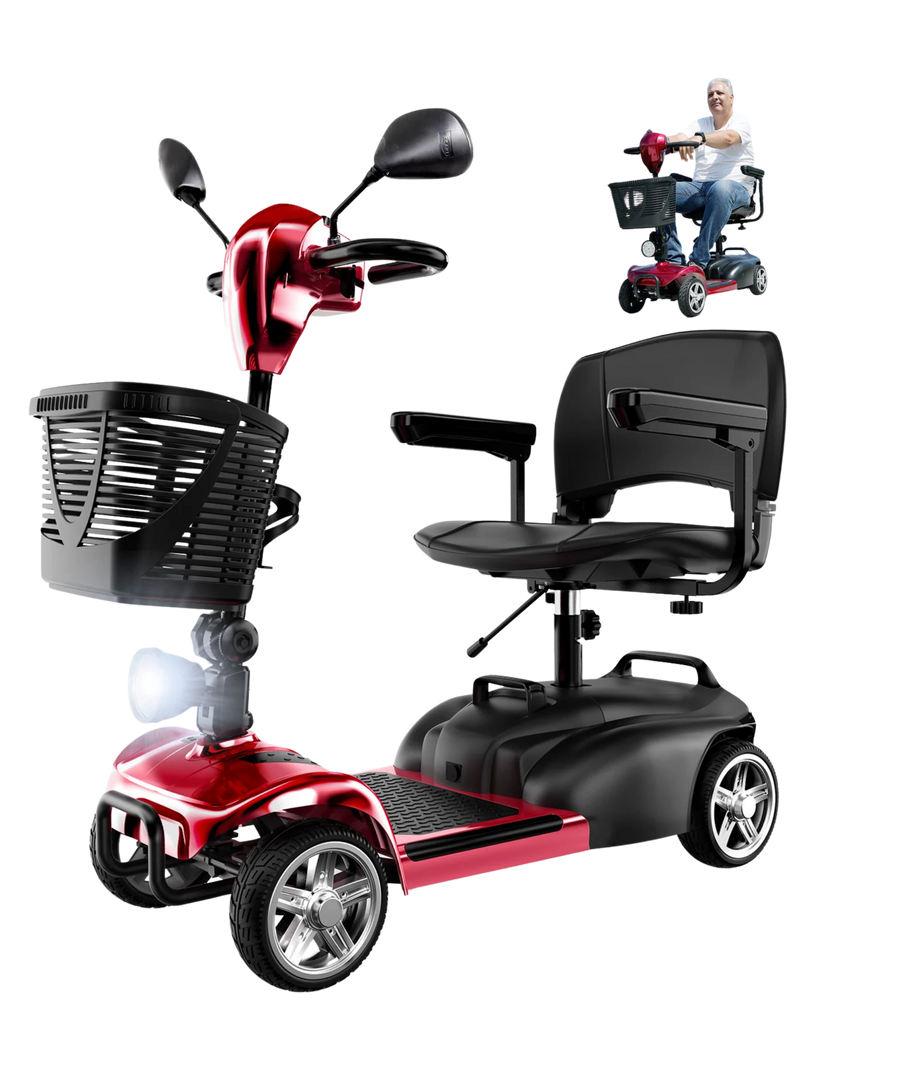
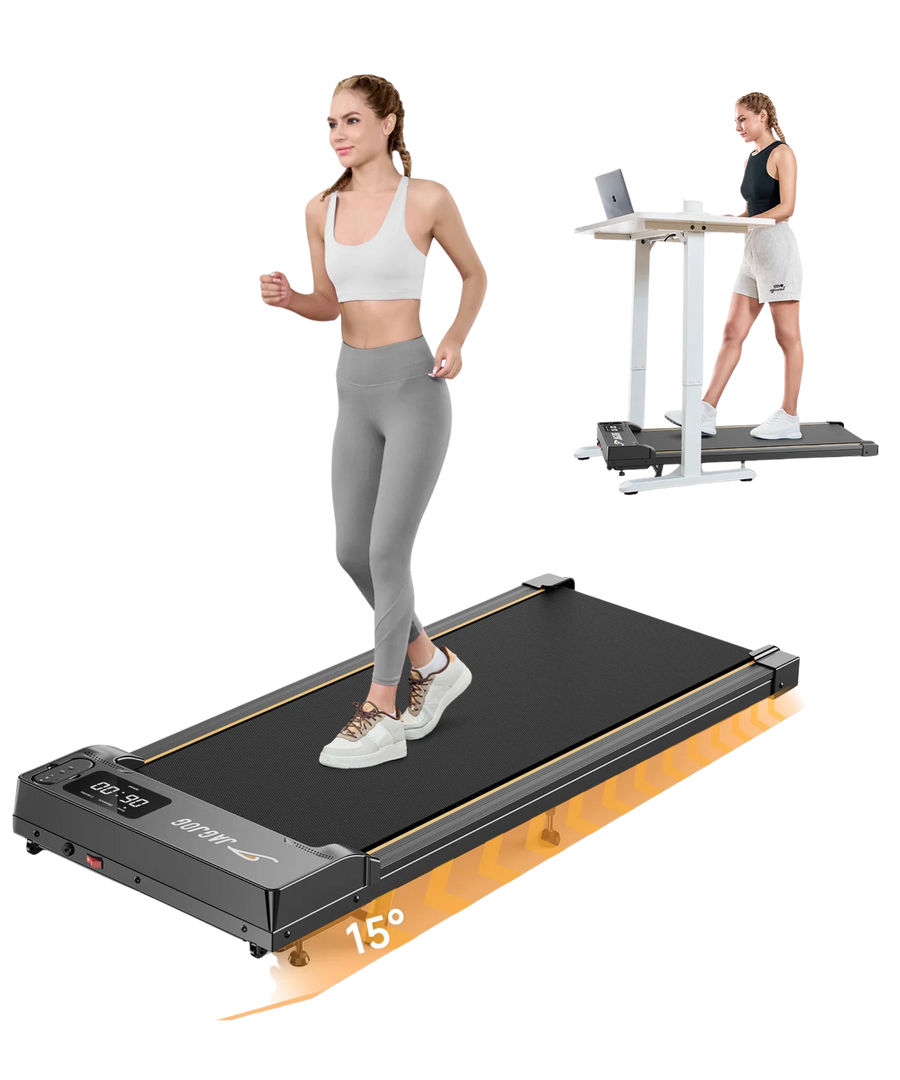


























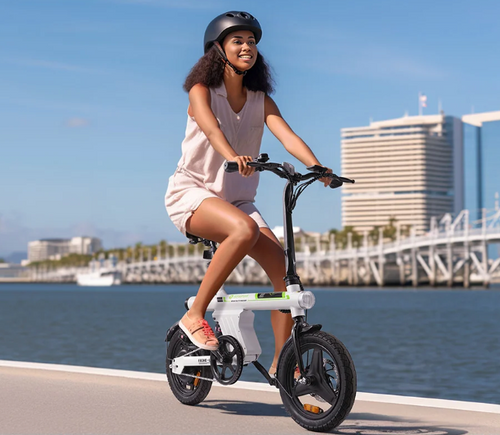



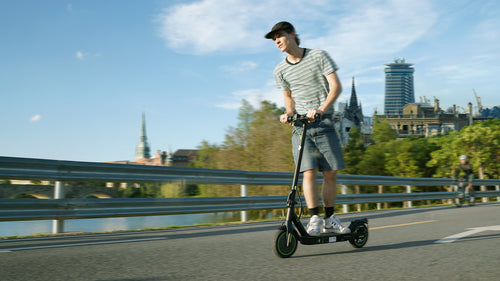


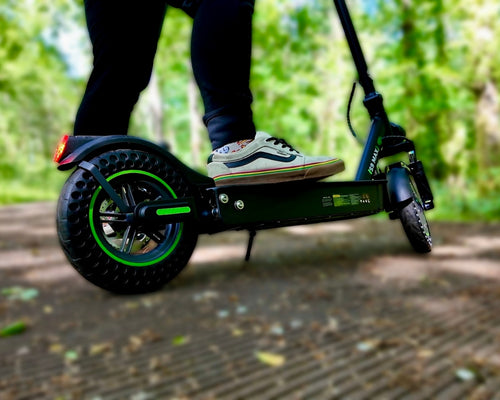
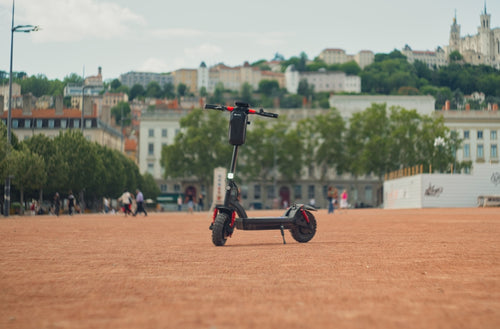
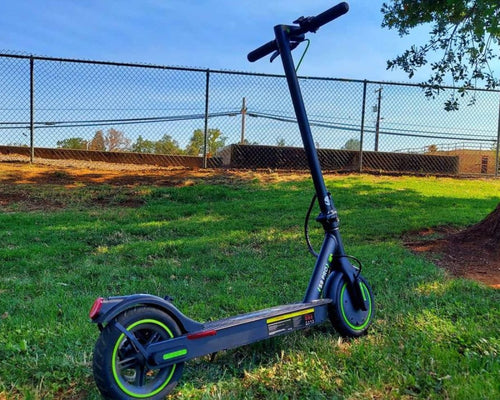





Leave a comment